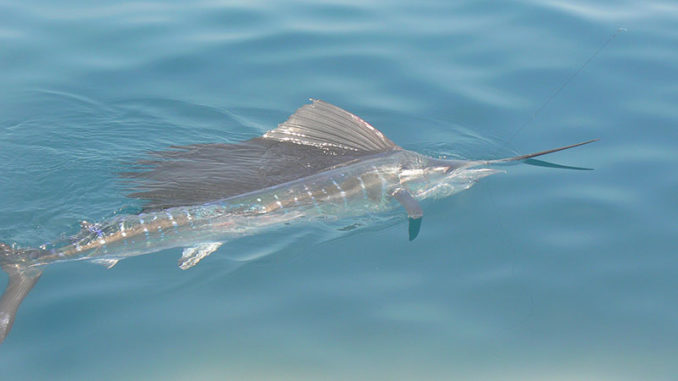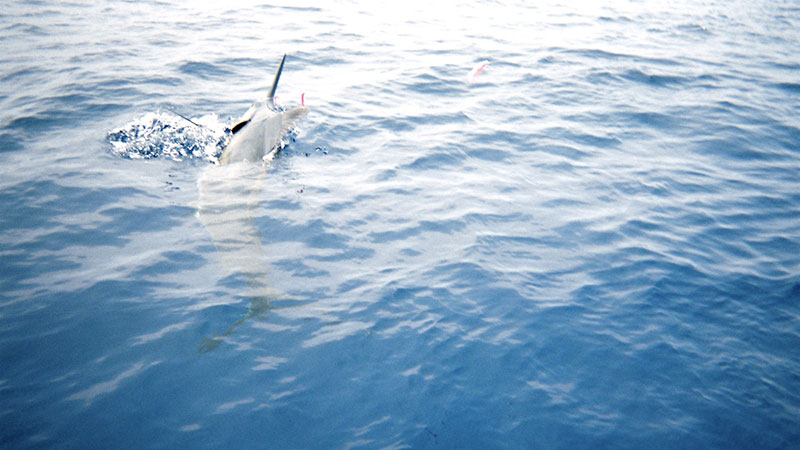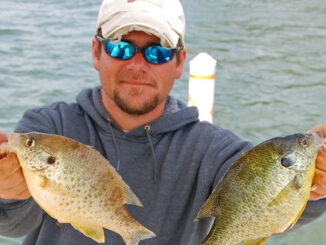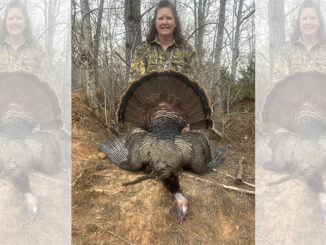
We’re still 2 months away from the start of billfish season and each Carolina’s respective Governor’s Cup Series. But I can guarantee that everyone involved in this aspect of the sport has it on their minds already.
North Carolina is where blue marlin fishing first became mainstream in the continental US, and South Carolina doesn’t lag far behind when it comes to numbers of fish. Both states also boast strong sailfish numbers, and the white marlin bite in the late summer at the Outer Banks is world class. Anglers flock to both states to check billfish off their bucket lists.
A hot debate among tournament fishing in recent years involves OmniSonar, which has hit the tournament scene hard. The product offers a 360-degree view of the water column, and has been in the commercial sector for many years. In the rich world of marlin tournaments, it’s now becoming a big player due to its value of seeing so much water. It hasn’t trickled much into the bread-and-butter world of offshore charter fishing, mainly due to its high cost, but some anglers fishing in big-money tournaments are happy to have it. To others, the cost isn’t justifiable.
This creates two informal classes: those with OmniSonar, and those without. Some anglers argue that the use of the technology is “cheating.”
Capt. Jeremy Hicks runs the Calypso out of Hatteras Harbor Marina and fishes most of the big tournaments, not as a hobby, but with charters as a part of his job. He doesn’t have OmniSonar, and said he doesn’t plan on getting it, unless the price drops substantially.
Another tool
Hicks made it clear that using OmniSonar is definitely an advantage when marlin fishing. Knowing what is around you and headed your way throughout the water column allows any team to make immediate adjustments to what they’re doing to get a bite.
The top blue marlin producing boat at Hatteras in 2022 was a private boat with OmniSonar, and they didn’t fish past June. Teams that use it correctly will catch more fish. But Hicks said the technology doesn’t give teams a big advantage in terms of the size of the fish they catch. Size only matters in a tournament determined by the biggest fish. In tournaments that go by numbers of released fish, allowing teams to simply target numbers of billfish with no regards to size, OmniSonar is a true game changer.
Hicks also noted that OmniSonar is changing the overall manner in which teams fish. Instead of watching the actual water around them for “fishy” things on top, such as birds, flotsam, etc., captains are spening more time looking at their sonar display, watching for a smudge that looks like a hot dog on the scope. And, super-competitive teams even employ an additional mate, whose job is solely to watch the OmniSonar all day. Hicks feels like their fishing experience is more akin to flying a drone, rather than an actual plane.
Speaking for myself, as someone who enjoyed being a mate on a charter boat more than literally any other job I’ve ever had (including being a boat captain), simply watching a sonar display all day would be extremely boring, even if it was as deadly effecitve as OmniSonar seems to be.
Not cheating

Like me, Hicks won’t go so far as to say that using this piece of gear is cheating, and we agree that it’s just another tool in the box for a fisherman to enhance their productivity. It certainly seems to be very effective, but not to the point it needs to be outlawed in the tournament scene. But it may be a good idea to create two different classes, simply those using OmniSonar and those not using it.
Any boat could still qualify for an overall prize pot, but other pots would be available for each class. Splitting the field like this is hardly unprecedented. Almost all king mackerel tournaments have small boat or single-engine classes and calcuttas, and at least one Governor’s Cup series event in North Carolina has historically had different classes for pro boats (with a paid captain or mate on board) and amateur boats (no one fishing for a living on board).
Fishing technology will continue to improve. Dead reckoning gave way to Loran-A, then Loran-C, and most recently to GPS. Boats more than 50 feet in length that cruised at nearly 40 knots were a fantasy not that long ago. And now they are seemingly everywhere. CHIRP sonar (dual transducers) had just come onto the scene barely a decade ago. And now OmniSonar is here, offering anglers another tool to help locate individual fish and put them in position to get more bites.
But what OmniSonar and all those other, now older technologies can’t do, is help you rig better baits, keep the hook in an angry marlin’s mouth, or assist the angler in putting the right drag pressure to the fish. All of these factors, along with an assortment of others, lead to tournament catches and wins.
OmniSonar is a quantum leap upwards in electronics. But in the end, it’s just one more tool in the bag. Some boats will win tournaments with it, and some boats will win tournaments without it. At some point, the price will drop and it will filter into the charter boat sector. Then everyone will either be raving or complaining about the next better mousetrap, whatever that may be.
Just another tool:
While OmniSonar is a quantum leap in the electronics department, it’s really just one more tool in an angler’s bag. It can help locate fish and put you in position to catch them, but it can’t make your rigs better, or aid you in your hookset.




Be the first to comment